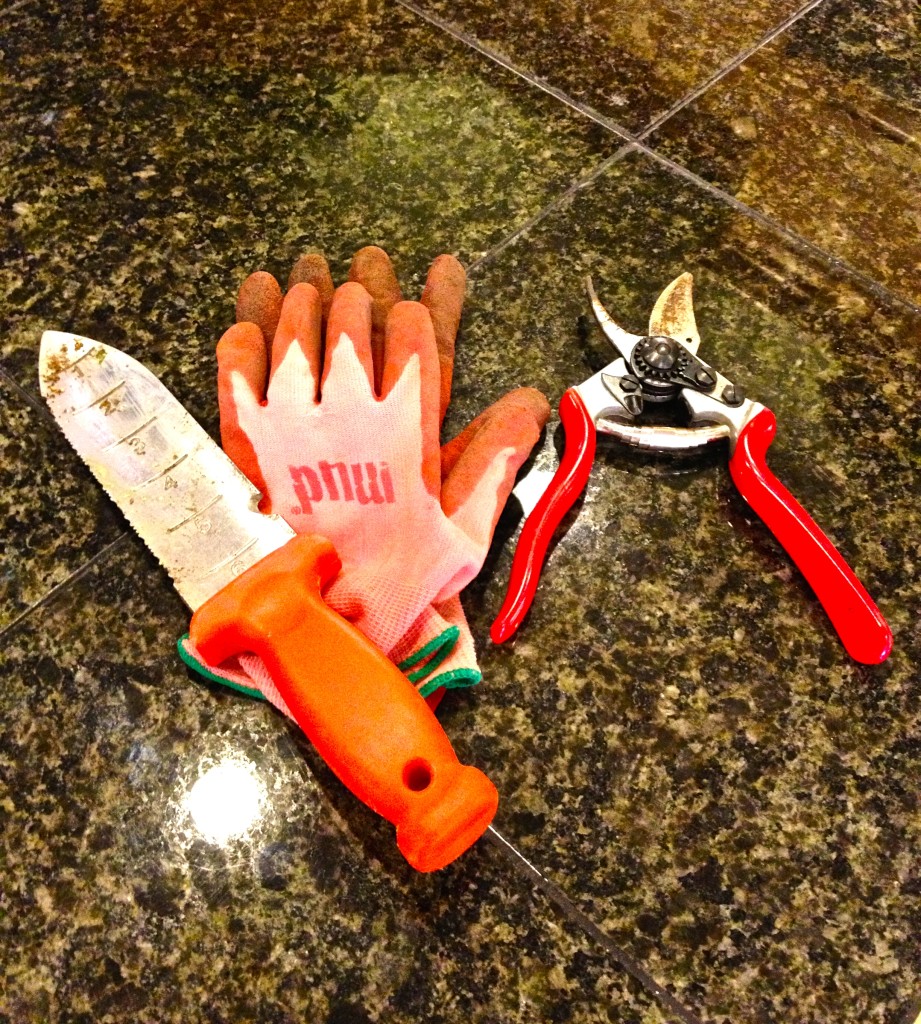

Getting more organized rests somewhere in the middle of my lengthy list of New Year’s resolutions. It includes staying on top of my regular gardening chores and getting ahead of each gardening season before it’s upon me.
With spring around the corner, the first step is taking stock of the garden and setting some goals. This is the time to make not just a mental list, but to put pencil to paper and get tough on your landscape. Think about both tasks and major projects that you either need to do or want to accomplish.
Does your walk around the garden with a critical eye make you cringe? Cracks in the patio, rotting wood, and muddy trails can all make your outdoor space tired and worn. Do raggedy landscape borders, splitting plastic edging, and washed out beds—devoid of soil and mulch—taunt you?
Then it’s time to take care of business. Use the end of winter to repair or take on new hardscape or structural projects. Plan out your project and shop building supply sources for sales or hire some help to take care of the more complicated projects. Start now, and you can check the big projects off your list. Then you’ll be ready in time for the fun stuff when local nurseries are filled to the brim with budding plants.
In addition to tackling sizable projects, there are also many simple chores you can cross off your list now.
Winter to-do list
Clean out your pots and containers. It’s important to start fresh when you pot up new plants. Old pottery can contain salt deposits or diseases borne by last season’s plants. Physically remove old dirt or debris with a scrub brush. If you can, submerge the pots in a solution of 1 part bleach to 9 parts water. If the pots are too big for that, pour the water all around them. Then be sure to rinse them well and dry them in the sun.
Take stock of your garden tools. Rusty, dirty, dull, or broken tools need to be prepared for the hard work you’ll demand of them when the weather warms up. First, scrub your tools with soapy water and dry them well. You can use steel wool or a wire brush to remove rust. Then smooth out old wooden handles with a little elbow grease and some sandpaper. Sharpen your clean equipment with a metal file, smoothing out nicks or jagged edges. Finally, apply a little lubricating oil to the metal blade and wooden handles and rub it in well so it isn’t slippery. And if your pruners have seen better days, consider buying a new pair. Nothing makes garden work easier than a shiny new pair of pruners.
Check your irrigation system. Whether you have a sprinkler system or you’ve set up your own drip hose system, give it a good inspection, looking for leaks, clogs and areas not receiving adequate coverage. Making sure everything is in good working order will save time and money later, preventing you from having to dig up dead or dying new plants in the spring.
Amend your soil. Does clay or limestone make digging impossible in your garden? Did the scorching summer heat turn the soil in your beds rock-hard? Use this time to amend the soil in your beds. A good soil blend, with some form of compost, granite sand and gypsum can help to lighten up our poor soil. There are many good independent local sources for soil–both in bulk and bagged–that work well in Central Texas.
Clean your birdhouses. In March, make sure your birdhouses are ready for their new inhabitants. If the house is vacant, open the roof or the back door to the house and empty out the nest. Wipe down the box with a bleach solution like that used for cleaning your pots. Then hang it back up with a welcome sign for a new brood of baby birds.
While winter is a slower season in the garden, it doesn’t last long here in Central Texas. The time for putting your feet up and perusing seed catalogs is quickly coming to an end. Make sure you’re ready when the garden calls again.
Local Landscape Designer and Garden Coach Diana Kirby provides landscaping tips at http:/www.dianasdesignsaustin.com and writes a garden blog at https://www.dianasdesignsaustin.com

